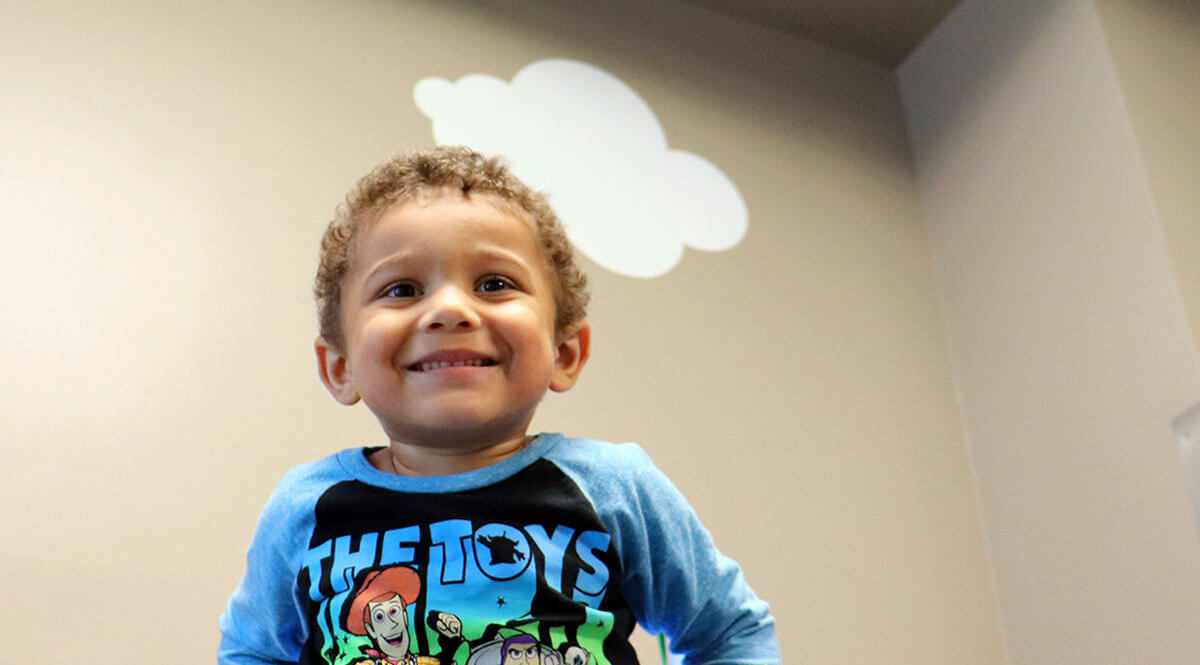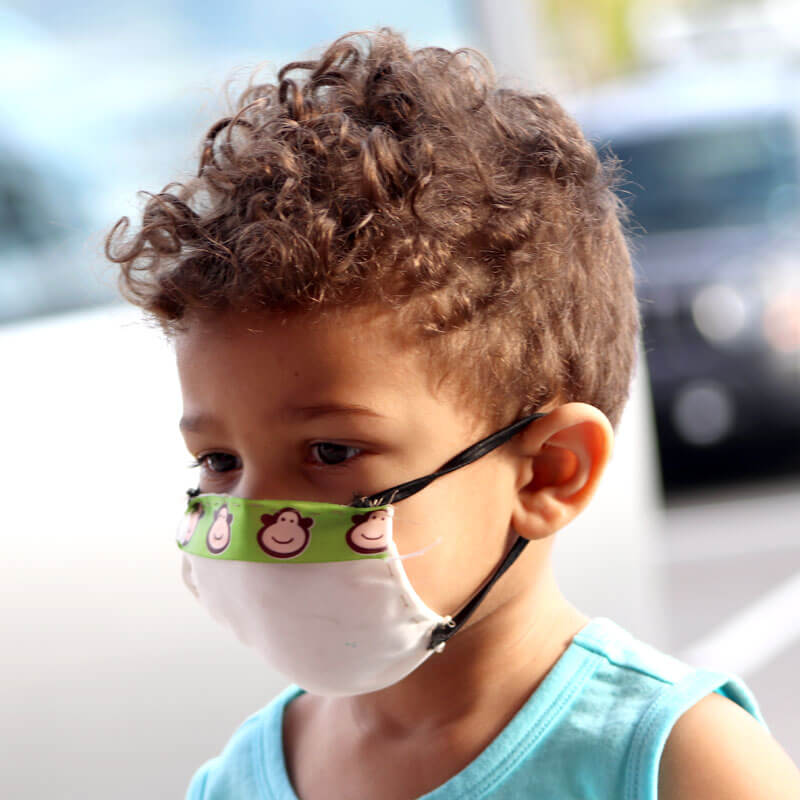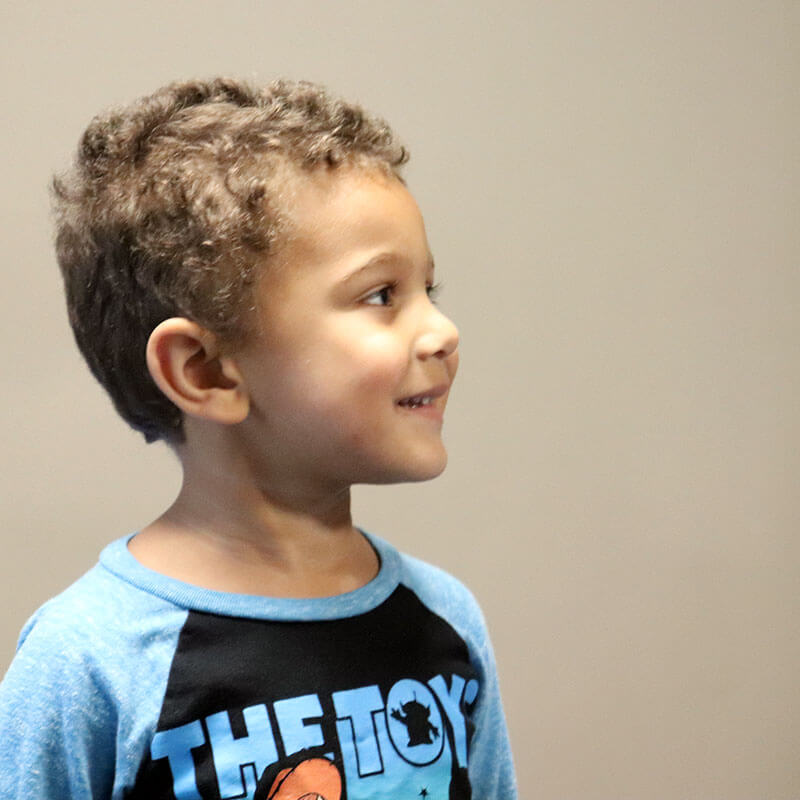How ABA and Speech Therapy Transformed Life for Daniel
August 24, 2020
August 24, 2020

At 3 years old, sweet Daniel has a captivating smile, says “hi” to everyone he passes, and constantly seeks to help those around him.
It was not always this way. As Daniel approached his 2nd birthday, he did not speak and did not want to play with other kids at birthday parties. He did not point or jump. If his mother, Daniela, asked what he wanted when she saw him frustrated or crying, he would often respond by hitting, scratching or biting.
Seeing her loving boy struggle with these challenges did not sit well with her, especially since she noticed some of his aggressive behaviors also affected Daniel’s older sister, Cali.

“I didn’t know where to start, but I knew I needed to get him help,” said Daniela. “I am dyslexic and was not diagnosed until high school, so I felt it was important to get him the support he needs while he’s still young.”
Daniela spoke to Daniel’s pediatrician about her concerns during his wellness checkup at 2 years old. At the visit, the physician screened Daniel for autism spectrum disorder (ASD) before referring him for a formal diagnostic evaluation.
Once he had the autism diagnosis, Daniela was determined to get her son access to early intervention services. She learned about applied behavior analysis (ABA therapy) at Hopebridge and jumped on the opportunity.
When Daniel joined autism services at Hopebridge in the Indianapolis East center, he had little to no verbal language abilities. With help from ABA therapy and speech therapy, things have changed drastically. Through dedication to using visual picture graphs paired with pointing and vocalization attempts, his therapy team was able to shape his language skills with tremendous growth to become a verbal speaker. In less than a year, he is able to approximate many two- to four-word phrases and averages 70 spontaneous mands each day. He continues to thrive in this area and his therapy team and family look forward to watching his progress.

Daniel’s newfound communication skills have helped him overcome other challenges as well. Since beginning ABA therapy at Hopebridge, Daniel’s aggressive behaviors have reduced by 100 percent of his baseline rate. At this time, most of his behaviors that parents might consider a “problem” actually mimic those behaviors of a neurotypical peer his age. This success is especially exciting since many of his mother’s initial concerns stemmed from Daniel’s maladaptive behaviors.
The bond Daniel shares with his sister is strong. He adores her and looks up to her. Because of this, sharing was a skill that was important to his family to target. Daniel has shown a large amount of growth in this area. He now requests items from others and responds to requests from peers.

While there are many special moments that have taken place at the center, Hopebridge Board Certified Behavior Analyst (BCBA) Samantha Davis shared a story about Daniel that sticks out in her mind.
“One of my favorite moments was when Daniel was able to self-identify that he was happy after communicating a need,” said Samantha. “I noticed he struggled to get out the right words with a therapist who was new to him. After I came in to assist, he was not only able to tell me exactly what he wanted, but upon accessing the item, he looked at me with the biggest smile and said, ‘happy.’ I nearly cried as we hugged it out and cheered for him!”

From social skills to receptive skills to adaptive living skills, Daniel is flourishing at Hopebridge. His options for playtime have increased, as he can now jump and throw a ball. He loves dinosaurs and dressing up as his favorite YouTube character, “Blippi.” He even has big dreams – he wants to work in construction with his dad!
“He has completely opened up since joining Hopebridge,” said Daniela. “He is so communicative and now that he is starting to talk, we get to see his personality shine.”
Daniel’s mother did not want his behaviors or lack of verbal communication to slow him down. By getting him the help he needed, he is able to live a more independent and fulfilling life.
If your child displays symptoms of autism, contact us at Hopebridge for an ABA or diagnostic evaluation to open more opportunities for them.
*Informed consent was obtained from the participants in this article. This information should not be captured and reused without express permission from Hopebridge, LLC. Testimonials are solicited as part of an open casting call process for testimonials from former client caregivers. Hopebridge does not permit clinical employees to solicit or use testimonials about therapeutic services received from current clients (Ethics Code for Behavior Analysts 5.07-5.08; BACB, 2020). Hopebridge does not provide any incentives, compensation, or renumeration for testimonials provided by a former client or client caregiver.
Kiddo Spotlight
June 10, 2020
How the Lives of Four Brothers with Autism Changed During the Pandemic
Kiddo Spotlight
June 06, 2018
Children with Autism Create In-Center Restaurant at Hopebridge to Build Job Experience
Kiddo Spotlight
December 30, 2022
High-Fives for a Year of Little Victories Making a Big Impact!